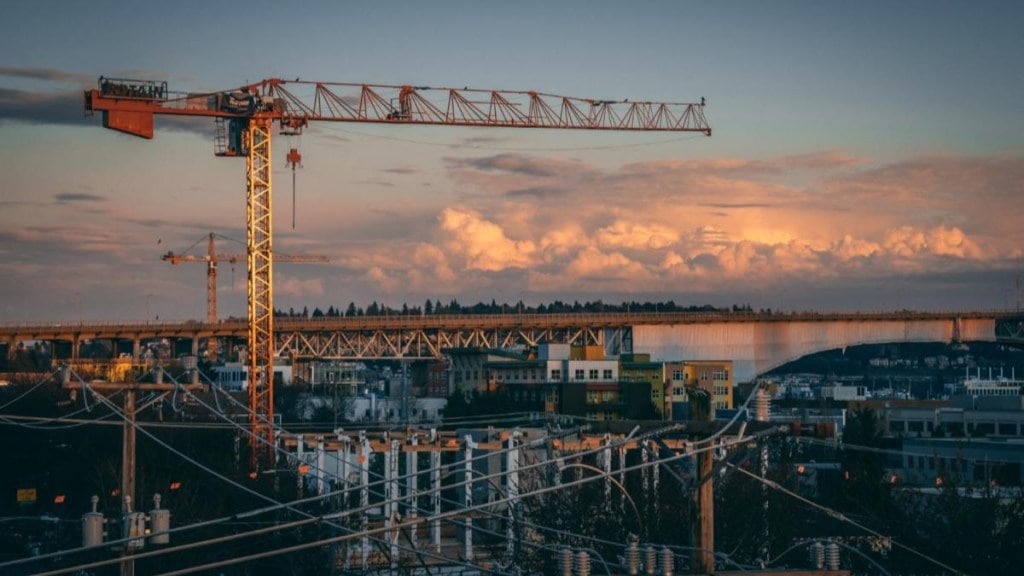At the fourth edition of the IE Thinc: CITIES series, presented by The Indian Express with Omidyar Network India and moderated by Amitabh Sinha, Editor (Climate and Science), panellists discussed how municipal bodies can leverage capital markets to solve climate-related problems.
On everyday challenges
Abhay Kantak: Urban development, as per the Constitution, is a state subject and every state government has a structure to follow. So, all municipal corporations in the country are not the same. In Maharashtra and Gujarat, municipal corporations provide all kinds of services — water, waste water and solid waste management, hospitals and education. They also have a discretionary service called public transport. So some cities also provide the city bus services.
This is not true for all corporations. The Bruhat Bengaluru Mahanagara Palike just provides solid waste management, electricity and roads. How do you manage and dispose of your waste to address climate change? Cities like Mumbai provide bus services, so converting them to electric vehicles is a challenge. One of the largest emitters of greenhouse gases are buildings. How do you create Development Control Regulations codes that will promote green buildings, reduce the impact of construction and monitor energy consumption and, by extension, the greenhouse effect?
Ideally, municipal revenues should be 3-4 per cent of the country’s GDP, but are currently at 0.9-1 per cent. Moving to 2 per cent is achievable. Property tax, currently at 0.15 per cent of GDP, should be around 1 per cent. Property tax also reflects the vibrancy of a city’s administration. Profession tax, capped at Rs 2,400 since the 1980s, should increase, as suggested by the 14th Finance Commission. Cities also need consumption-linked taxes like octroi, which was replaced by inadequate compensation, hurting municipal income.
Keynote Speaker
As per the Climate Risk Index 2021, India was the seventh most vulnerable country to climate change. A total of 21 of the 30 most polluted cities around the world are in India. In the last few years, there have been multiple instances of flash floods, wildfires and the impact of pollution and heat waves. Municipalities, at the forefront of local governance and service delivery, are uniquely positioned to address these climate issues. They are interested in managing infrastructure, public services and community welfare, making their roles pivotal in implementing climate solutions.
Ashwani Bhatia — Whole Time Member, SEBI
On climate projects
Shekhar Singh: There are two approaches to infrastructure projects. One focusses on making existing infrastructure disaster-resilient, such as sewage treatment plants (STPs) and water treatment plants, which are vulnerable to climate change impacts like extreme rainfall. The second involves developing new projects that help combat climate change, such as riverfront development, which includes cleaning rivers and upgrading STPs. For instance, in Pimpri-Chinchwad, the Pavna riverfront development alone costs around Rs 1,400 crore. Another initiative, the 15-minute neighbourhood concept, encourages walking and cycling for daily tasks. The Harit Setu project for this concept costs Rs 200 crore, with green bonds funding these projects.
Cities are also working on sustainable mobility, transitioning to electric buses, but they face challenges due to high costs. Pimpri-Chinchwad and Pune share a bus fleet, where 35 per cent of the fleet are electric buses, though the target is much higher. Expanding it to meet global benchmarks would require Rs 5,000 crore.

Municipal bonds are crucial for immediate funding of climate projects that can’t be delayed. They allow cities to complete projects in two years rather than spreading funding over a decade. This ensures faster, more efficient infrastructure development to meet pressing environmental and urban needs.
On climate financing
Arnab Choudhury: We work as margin bankers, helping municipalities prepare to tap into capital markets. SEBI has been progressive in its approach, designing frameworks to promote this, but municipalities often need guidance. They have their challenges and finance is only one aspect of their responsibilities. We are proud to have worked with three municipalities last year and continue to be involved with others. While bank, multi-lateral and bilateral loans are available for funding, capital markets offer unique benefits. For instance, when undertaking green projects, capital markets enforce discipline by requiring municipalities to maintain specific key performance indicators (KPIs) essential for sustainability. Without this, bilateral transactions may allow for complacency, with less focus on necessary parameters.
Capital markets also help municipalities streamline their operations. Many have improved their financial practices just by preparing to enter these markets. For example, Guwahati Municipal Corporation, despite using cash-based accounting, is working to adopt double-entry bookkeeping as part of its preparation for market readiness. This process alone ensures better financial discipline, even if they don’t immediately receive the required rating.
Lastly, municipalities like Guwahati face significant challenges, such as groundwater scarcity and flash floods, compounded by limited control over key resources like roads, which are often managed by other agencies. Despite these constraints, there is a growing determination to explore market opportunities and overcome these barriers.
On civic amenities
Santosh Tiwari: From birth to death, ULBs (Urban Local Bodies) play a crucial role. Birth, death, and even marriage certificates are provided by ULBs. Beyond these, ULBs ensure access to clean drinking water, manage sewage and maintain transportation systems. However, the demands have increased. Today, ULBs must provide treated, potable water, requiring multiple levels of treatment. Discharging untreated sewage is no longer acceptable, and tertiary treatment, mandated by the NGT, requires substantial funding.
In addition to these, ULBs must now invest in infrastructure like bridges, flyovers, ROBs (road overbridges) and FOBs (foot overbridges) to meet growing urban needs. For Vadodara, funding these projects is crucial. Some projects can be delayed but many cannot. For example, Vadodara previously generated 400 MLD of sewage but could only treat 200 MLD. By raising Rs 100 crore from the market, the city now treats 440 MLD of sewage and plans to sell treated water to industries, generating additional revenue.
Such funding is underscored by changing weather patterns. Rainfall, once spread out over a year, now occurs in intense bursts, overwhelming stormwater systems designed for lower capacities. Climate change has also led to unprecedented heatwaves, further increasing demands on ULBs. This is why Vadodara has adopted the bond financing model, with both of its bonds being highly successful, securing the lowest coupon rates.
On investments
Shilpa Kumar: Indian cities have been major contributors to the country’s growth, attracting people in search of livelihoods. Cities are not just economic hubs but also places where people seek to build their lives. At a macro level, cities are vital for economic growth, while at a micro level, the quality of life is shaped by city governance. From air quality to access to parks and clean water, city governments play a critical role in managing the scale of urban living. However, Indian cities face immense challenges, particularly due to the sheer scale of their populations and limited resources. Many city governments struggle with inadequate revenues, often generating less than 50 per cent of what they need annually. This becomes more problematic in the context of climate change, which disproportionately impacts the most vulnerable residents of urban areas.
While capital is available, the challenge lies in the creditworthiness of cities. Investors need clear financial data, such as audited accounts and robust revenue streams, to lower the barriers to investment in municipal bonds. Beyond this, there are global pools of finance available for cities to address climate mitigation and adaptation projects, such as rejuvenating water bodies or building green spaces. However, accessing this capital requires overcoming technical barriers, including meeting specific conditions and aligning projects with overall city plans.
Capacity building is crucial for cities to tap into both municipal bonds and global finance, especially for adaptation projects, which are often smaller and more complex to assess. Pooling projects and breaking down these barriers is key to unlocking necessary funding.

